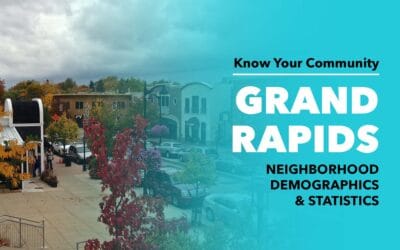This is the survival guide you need to master local SEO for your small business in 2022.
If you’re a small business, local SEO (or search engine optimization) is one of the most crucial things you can do to make more profit for your business.
This guide is going to help you reach your goals in 2022, and walk you through the exact methods to help more people find you.
Success By the Numbers

Local SEO is one of the most affordable investments in your small business that can get you the best return on your money, and an increase in sales.
The idea is that your company will be in front of more people, which means more people will choose your company.
Here are some SEO stats that you need to keep in mind if you’re on the fence about what a powerful tool local SEO is for a small business.
- The majority of folks buy on their phones: in 2021, $1.4 trillion in sales were made on mobile devices.
- 88% of people called or visited a local business within a day of searching
- 72% of customers chose a store that was 5 miles or closer to them at the time of search
- 46% of people searching on Google do so for local information
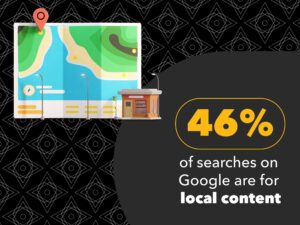
So as you can see, these hard, crunchy numbers all point toward the same thing: people are buying from the local businesses they find using local search.
The question is, are they finding yours?
You Will Make More Money
While “search engine optimization” sounds like a fancy term, it basically just means “you’ll pop up when people are actively searching for what your small business does.”
This is really, really important because if someone is searching locally, they are very likely to be looking to spend money at that moment.
By optimizing (or tightening up) your local SEO, it means that you’re going to be on the shortlist of businesses that pop up when someone is choosing who they’re going to spend their money with.
Let’s do some simple math to show you how much money is on the table.
This math is basic and makes common sense for any business. Imagine this money-making equation for your small business. (For this example, we’ll use an auto repair shop, but when you’re reading it, be thinking about what these numbers could mean for your bottom line.)
Let’s say that 100 people a month are searching for “car repair near me.” (It’s probably much more than that, but depending on your area we’ll keep this math super conservative to prove the point.)
If you’re an auto repair shop you’ll typically get at least one call a month from Google that turns into a sale. But there are way more people searching. In fact, depending on your area, it’s far more likely that there are 500 people or more searching for terms like “auto shop near me.”
So if you’re already getting a measly one call a month, what would that look like if you increased that to 20, or 30, or even 50+ calls a month? Can you imagine what that would do for business?
And the great news is that we learned above that more than 80% of Google local searches result in either a phone call or an in-person visit. In fact, we’ll even lower the 88% average down to 80% just to be extra conservative, and show you how strong these numbers are.
So if you can get 20 new customers a month, and if the repairs average only $100 each, you’ve just increased your sales by $2,000 a month. And that is being hyper-conservative when it comes to repair costs.
The truth is that most auto repair shops have a repair bill that’s much higher than that, and when they use local SEO they get many more calls than they were before.
So if there are 500 people searching for “auto shops near me” each month in your area, with 80% turning into a call or visit, if you even only got 20% of those people to get a repair, you’re looking at a potential increase of 80 customers a month.
And if we take the study that AAA did, the average auto repair is between $500-$600 per visit. If you do that math, you have the potential to increase your revenue up to $40,000 per month.
What If I Don’t Make a Lot Per Sale?

So you might be asking yourself, “what if I don’t make $500 per sale?” That’s a fair question, but this math can benefit any company of any size.
So whether you’re a restaurant, a plumber, a printer, a fitness center, or anything else, this math will make all the difference in the world for your company.
Consider this: the auto repair shop may have an average sale that’s in the hundreds of dollars, but that isn’t something that everyone needs every month. If your business makes its money with a higher quantity of smaller ticket sales, you’ll also likely show up in more searches more frequently.
With local SEO, whether you’re a pet sitter, a cafe, or any other small business that has a lower cost-per-sale, you’re likely going to have a lot more searches for exactly what you do. So from there, we can just scale the math.
Say there are 4,000-5,000 people per month searching “good food near me” (or whatever your niche is), and 80% of those turn into calls or visits. You’re far more likely to get the sale with a lower ticket price. So rather than the 20% of people who get an auto repair, we’ll say that 60% buy something. Even if your average sale is $10, you’re looking at a revenue increase in revenue of $19,200 per month.
What If I Have a Niche Business?

If you do something that doesn’t get a high volume of searches, it’s more important than we can express to be sure that you’re working on your search engine optimization. You have to think of it this way: you have fewer chances up to bat.
If you capitalize on local searches, you can rest assured that if only 50 people per month are searching for exactly what you do that all of them will see your small business when they do search.
If you’re a niche small business, local SEO is a critical way to capture as many customers as possible while they’re trying to find someone who does what you do.
The Sales Continue
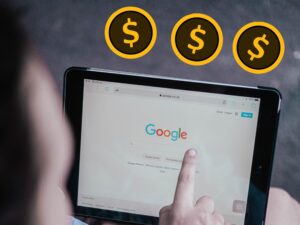
Something else to consider as you start your journey using local SEO is the total lifetime sales value of a customer.
When someone finds you in their local search, you have a high likelihood that (as long as they have an awesome experience) they’ll also become a repeat customer. And some of those repeat customers may become your best customers.
We also see that when more customers are finding you, word of mount increases naturally. This results in an awesome effect that looks something like this:
- You improve your local SEO so more people find you.
- Those people tell other people through word of mouth.
- The people who hear about you through word of mouth search for you on Google Maps and click your business
- This looks good to Google, so it helps your local SEO
And so on, and so on, and so on.
As you can see the math we’ve been discussing only improves with the more local SEO work you put in. The growth can be substantial, and we’ve seen some businesses need to expand their operations.
Think You’re Already at the Top? Think Again.
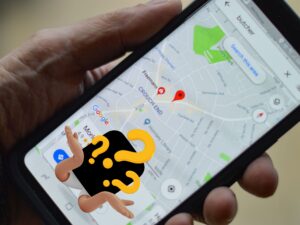
Something you have to remember is that someone is popping up when people are searching Google.
Depending on how businesses there are in your area, and if any of them are doing local SEO, there’s no guarantee that you’ll be showing up in searches. And if you pull your phone out right now and search, and pop up at the top, don’t get too excited.
Why?
Well, because Google takes into account the different things that you’ve done on your device and includes your behavior and preferences in the searches you make. So your behavior modifies You very likely conduct business on your phone, visit your own website and other things that would absolutely involve your business name, address, and other details.
This means that when you search for “dog walkers near me” in Google maps, your device has a bunch of information stored about your business, “Al’s Dog Walking Business.”
The real power of local SEO is to show up in the searches of complete strangers who have never heard of your business before. They’ve never been to your website and they don’t have anything on their device that is making Google favor your business over all of the others around you.
Beat Out Your Competitors
If you’re not at the top, someone will be. There are a lot of factors that can cause your competitors to rank higher than you. Remember that Google keeps the exact formula to rank behind closed doors so people can’t game the system. However, Google does give some best practices that they consider to be the signs of a legitimate business that is trying to find more customers.
Remember, there are a lot of things to consider when you’re looking at who is ranking first in the ever-watchful eyes of Google, so it’s also not about just excelling at one of these things, but all of these things where you can.
So what does Google look for?
Three things:
- Relevance
- Distance
- Prominence
Those are just fancy words to describe some very basic concepts, and we’ll explain those concepts in more detail in a moment.
But the very first thing that Google looks for is a Google Business Profile. A Google Business Profile is the place where Google actually measures the Relevance, Distance, and Prominence we’ll be discussing. Here’s a primer so you understand it.
What is a Google Business Profile?
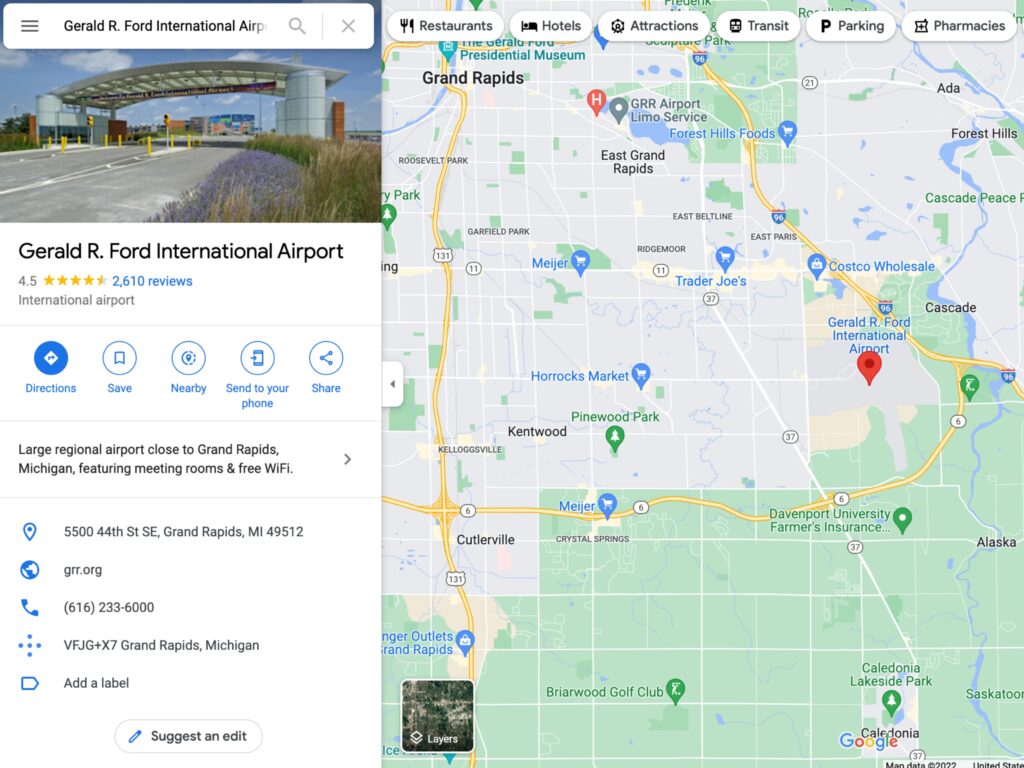
The Google Business Profile is essentially your official registration with Google that states that you are a company that wants to be listed in their searches.
Whenever you manage your online presence when it comes to all things Google, you’ll typically be doing this in your Google Business Profile listing. It’s connected to Google Search, Google Maps, which are the two areas that are important when it comes to local SEO.
But this is far more than just a static listing. Don’t treat your Google Business Profile like an entry in an old-fashioned phone book. Think of it as a way to help customers learn about your business. You can use it to tell your story and show customers that you’re a trustworthy and active small business.
If you’re unsure how to register your business, or if you’re not showing up in Google Maps at all, don’t sweat it– we built a guide for you. Check out our how-to article here.
Why is this So Important?
As you’ll be able to read in the help article we’ve provided above, if you don’t have a Google Business Profile, your company literally has no chance of showing up in Google searches locally.
Your Google Business Profile is also where you can manage all of the aspects of how your business appears to customers when they’re searching. You can edit things like business hours, your street address, and a link to your company’s website.
Your reviews are also located on your Google Business Profile, and this is the only place you can officially reply to the reviews that customers leave.
You can also use any photos and virtual tours of your business that are loaded into your Google Business Profile to show off your business to would-be customers and give them an idea of what your products and location look like. It’s been proven that profiles that have photos receive almost 50% more requests for directions and 35% more clicks to their website than companies that don’t have photos.
When you take a look under the hood of your Google Business Profile you can also learn a lot of valuable information about how customers are already interacting with your business. These details can help you understand what to focus on when you begin working on your local SEO.
So How Can You Improve Your Local SEO?
So remember above when we mentioned Relevance, Distance, and Prominence? Let’s dive into each one of those in a little more detail so you can start to understand what Google uses to rank you.
By focusing on these things, you should start to stand out from the pack and get higher rankings than your competitors over time.
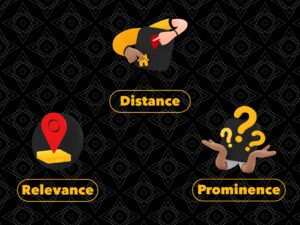
Relevance
When we’re talking about relevance in local SEO, just think of it as asking yourself “how well does my small business match what the person is actually searching for?” This matters, and Google can measure it in various ways. The best way to make sure you show up in the right searches to make sure to flesh out your business details fully with the right sorts of information. Think of it this way: Google only knows what you tell it through your listing, so the details you fill in help Google understand your business and attempt to match your profile to the right searches.
Distance
This one is largely out of your control, but it still matters. Remember the stat above that shows that 72% of customers typically choose a store that is within 5 miles of where they are? Google factors in your distance from the person searching because it knows that the closer the results they show, the better. It’s important to note that almost 30% of people will still potentially click on your listing even if you’re outside of the typical 5-mile range. Also keep in mind that some folks searching don’t specify a specific location in their search, and they don’t care as much because of what they’re looking to buy.
Prominence
This one is a little more tricky, and bit more involved. This is basically Google’s measure of how well-known a business is online. Typically Google bases your prominence on all of the details it has about your business from across the internet. So this doesn’t just mean your Google Business Profile (though that is a factor). Google takes a look at what kinds of directories you’re listed in, the types of articles you’re mentioned in, and even other people who have put links that lead to you on their own websites and social media. Google will also look to see how well your website ranks in its search engine.
But that’s not all. Google also keeps an eye on your total review count (how many reviews people have left for you, either positive or negative) as well as your overall review score on various platforms like Yelp and your own Google Business Profile. Overall, know that getting more reviews that are positive definitely help your local SEO ranking.
This is the toughest factor of all because it has many moving parts, and can feel overwhelming. Google themselves come right out and say that there’s no way to buy a “top” ranking or request it from them. They also mention that they keep the exact scoring system they use (also known as “the algorithm”) a secret. One benefit to the secrecy of the algorithm and the fact that you can’t buy your way to the top is that companies of all sizes have to follow the same set of invisible rules. This keeps it fairer for businesses of all sizes.
So what can you do, specifically, to help your local SEO? Read on.
You Need to Do What Google is Looking For
So what other specific things is Google looking for when they’re ranking your business? Here are some basic steps that Google has come right out and asked for.
Update Your Business Profile

It is very common for a business owner to set up their Google Business Profile when they start their business, and then never re-visit it again. This looks horrible to Google. Not only is information out of date or wrong for your customers, it also looks like you don’t care about your profile.
Another danger in this scenario is that sometimes Google will add new features to their business profiles. If a feature was added after you created your listing and you’ve never updated it, the place in your listing where the new feature appears will just be blank– which can look sketchy to potential customers and Google.
If you want people to find your business when searching locally, you have to log into your listing and make sure it’s completely filled out, and that all the details are accurate.
Oh, and don’t be boring.
Sure you can just put cut and dry information, but you can also write things in a way that will stand out and be engaging for your customers. Pretend you’re writing to yourself or your best customers. What would they want to read?
In terms of the “musts” that you absolutely should have filled out, double-check that the following things look good:
- Your physical address. Did you move? Expand?
- Your phone number. Have you changed numbers? Added new ones?
- Category. There are many, many specific categories, and it’s likely that many have been added since you last checked. Be sure yours is as accurate as possible to immediately start showing up in more searches.
- Attributes. This is how your business can show it does specific things or has specific services. Things like “curbside pick-up”, “reservation suggested”, and “bike storage” are just a few of the many attributes you can use to manage customer expectations and show up in more Google searches.
- Verify your location. Google will mail you something with a code on it to prove you’re actually at the address you claim. This is very important for credibility.
- Keep accurate business hours. Did your hours change during the pandemic? Are you still open the same days of the week? For an additional bump in trust in the eyes of Google, be sure that all of your holiday hours are filled out.
- Reply to all of your reviews. Responding properly could be an entire article itself, but we’ll just say “always reply” is the best thing you can do. Even if it’s a great review, say “thank you.” If it’s a negative review, don’t argue, just state facts and ask them what you can do to make it right (that will look good to others who see the review later).
- Add photos. If you have no photos, add some of your storefront and maybe some of your interior or products. You have some photos that customers added as well, but don’t leave it up to them. Photos visually tell the story of your business to people looking at your profile.
Bonus Tip: While this isn’t required, a 360 virtual tour can really set your business listing apart. The challenge is that to do this correctly and professionally you need specialized equipment. If you’re interested in seeing how Good Rep Media will provide this service to your small business at no charge, we provide details at the end of the article.
More Hacks to Level Up Your Local SEO
So, we’ve gone over the bare minimum of what Google is expecting in terms of your business appearing legit, active, and accurate. But that’s just to stay “in the running.” So what can you do to break ahead of the pack? Here are a few little-known tips.
You Can and Should Post on Your Google Business Profile
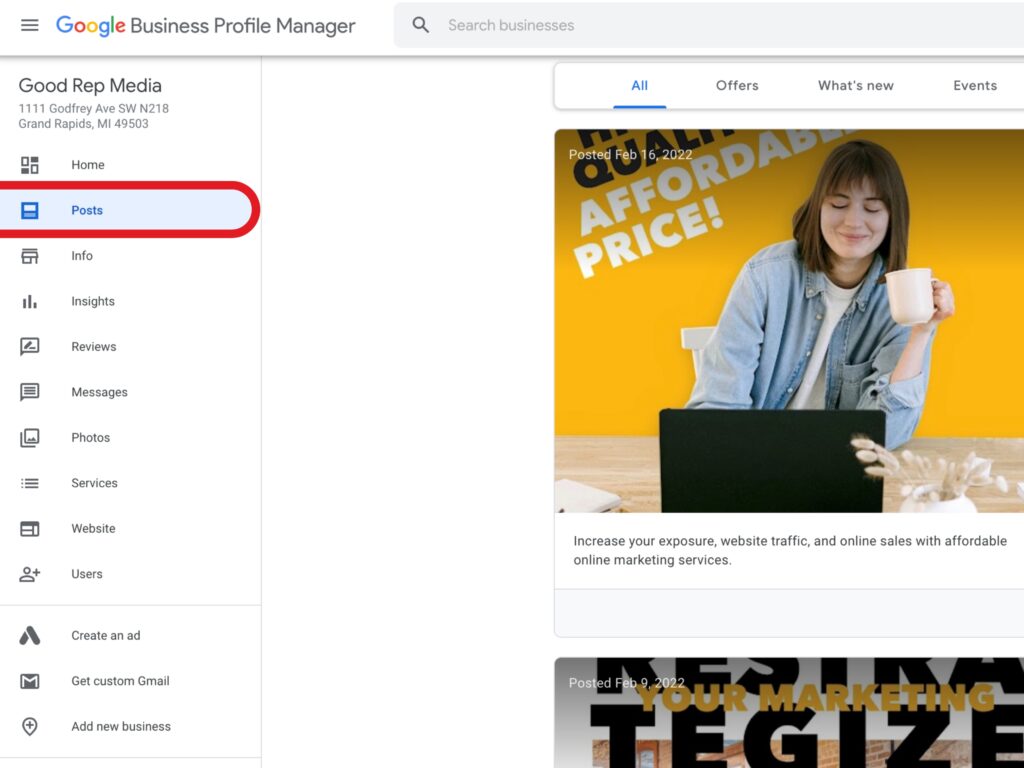
That’s right, you need to be posting on your Google Business Profile. In fact, think of it as a social media page that Google grades you on every week. The more active you are the better. And one of the best ways to stay active and connect with your customers is by using Google Business Profile posts.
These act a lot like a Facebook post, but have some other cool options that can help boost business and show up in more local searches.
Best practices are to make sure you use an image, make sure that you have some snappy well-written text, and then include a specific call-to-action. Are you having a sale on a specific product? Offering a lunch special? Hosting a local organization’s event? Think about what you’re wanting to tell people about, and then choose one of these post types that Google gives you.
What’s New: Share some news or announcements
Events: Trivia night? Karaoke? Free classes? Post here with the date and time.
Offers: These are specific promotions like sales, discounts, etc. You can make these active for a limited time, and even drop in coupon codes.
Products: If you have products set up in your Google Business Listing, you can use this kind of post to feature them.
You need to be posting something to your Google Business Listing at least once a week. However, the more the better– it’s not uncommon for some businesses to post more than that and see great results.
Keywords Matter

When you’re making your posts, and when you’re filling out your profile, you should absolutely use specific keywords. So you’re probably thinking “Okay, great. What does that mean for me?” Well, simply put, there are ways to see what people are actually searching for in your area, and then including those words in your profile and posts.
You might be thinking that you need to post about “Holistic Yoga Spa”, but if you do the right research, you could find that only 10 people search for anything remotely close to that each month.
On the other hand, your research could show that 250 per month are searching for “hot yoga near me” or “best yoga in Smithtown.” By simply including those words in your business listing and in your weekly posts, you are going to show up far more often.
So it doesn’t mean you have to exclude the mention of the fact that you’re a holistic yoga spa, you just also want to use the keywords that people are searching for as well.
There are a lot of tools out there to help you find the right keywords– some of them are paid, and some of them are free. You also have to know a bit more about how to research properly to get the most mileage out of this tip.
If you need help finding a keyword tool or finding the right list of keywords for your business, give us a call.
Final Thoughts
Overall, local SEO is simple to understand but difficult to master. It has a lot of moving parts and most of all, can take a lot of time to execute properly to get results.
The key is to be as consistent as you can, and try to take it one step at a time. Don’t try to level up your local SEO in one day, or even one week. Do what you can, when you can, as consistently as you can, and you’ll slowly start to see improvements.
And if you feel like local SEO is what you need, but you honestly don’t feel that you have the time, energy, or mental bandwidth to take it on, you’re not alone. That’s very common, and that’s where Good Rep Media can help.
Local SEO for Small Business Can Be Challenging
If we’re being one hundred percent candid, the truth is that you can very likely take care of your own local business SEO. However, 90% of business owners who say that don’t actually follow through consistently to get the results that they need.
Why? Because handling your local SEO is basically it’s own full-time job to do correctly. And it has to be done very consistently for Google to take you seriously. You can’t just do it “when you can” and expect to get any sort of meaningful results.
It’s very likely that you already have a full plate running your business, and the last thing you need is one more thing to keep track of and finish.
Don’t forget the math that we mentioned above. What would that math look like for your business? If you were consistently getting more phone calls and visits, what would that look like for your profits?
Here at Good Rep Media, we have a team of specialists who have specific experience in helping small businesses increase their local SEO. We know that as a smaller company, being sure that customers can find you is crucial, and we take that very seriously.
If nothing else, let’s just have a conversation about how your Google Business Profile is currently performing. The check-up is 100% free, and you have nothing to lose. By the end, you’ll at least have a clear picture of how your business is doing in the world of local searches.
If that wasn’t enough, if you’ll agree to sit down with us and have a short conversation about your digital marketing needs, we’ll also film a no-charge 360-degree virtual tour for your Google Business Profile. This can only be done with a specialized camera and will give customers a chance to literally walk through your location.
Remember how we said above that Google Business Profiles with photos get nearly 50% more requests for directions and 35% more clicks to their website than companies that don’t? Well that number gets even better when you have a virtual tour.
You have nothing to lose. Let’s talk today and get you started on the path to more customers finding your business locally.



